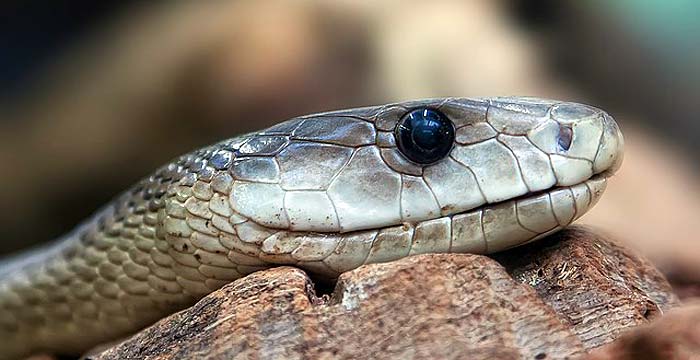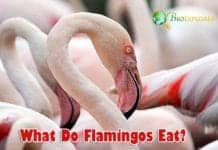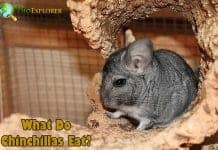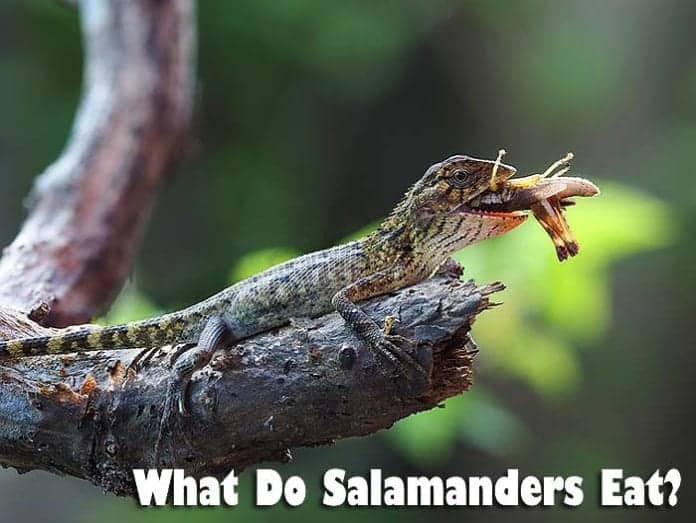
What Do Salamanders Eat? Salamanders are classified as amphibians (order: Caudata). Thanks to their slender bodies, they look like lizards, and they are often confused as them.
Salamanders are mostly carnivorous, and they dine on an array of small animals which includes but not limited to mysis (on lakes) buffalo worms, insects (crickets, maggots, fruit-flies), and even spiders. Salamanders are also cannibals at times, feeding on members of their species.
One salamander species also consume algae and plants in addition to meat.
Table of Contents
What Do Salamanders Eat?
| Common Mudpuppy (Necturus maculosus maculosus) | Common Mudpuppy emerges in the dark to feed on snails, crayfish, and worms. |
| Red Salamander (Pseudotriton ruber) | As adults, Red Salamanders eat terrestrial and aquatic insects, earthworms, slugs, snails, spiders, and small salamanders. |
| Tiger Salamander (Ambystoma tigrinum) | Tiger Salamanders come out of their burrows at night to feed on worms, insects, frogs, and at times, other salamanders. |
| Gold-striped salamander (Chioglossa lusitanica) | As adults, the gold-striped salamanders feed on insects, small mollusks and spiders. |
| Clouded Salamander (Aneides ferreus) | Clouded Salamanders feed on termites, ants, centipedes, millipedes, and other arthropods found on the ground. |
![]()
Salamanders Diet By Types
About 500 species of salamanders have been identified by scientists with more species being discovered almost every year. 3 broad types of salamanders exist, which includes aquatic salamanders, semi-aquatic salamanders, and terrestrial salamanders.
This section will look at salamander species drawn from each of the types pointed out earlier.
A) Aquatic Salamanders
| Animalia | Caudata | Proteidae | Necturus | Necturus maculosus maculosus |
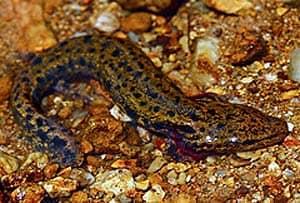 The species classified under the aquatic salamander families entirely live in water, especially water bodies that have high oxygen content. An excellent example of a salamander species under this category is the common mudpuppy.
The species classified under the aquatic salamander families entirely live in water, especially water bodies that have high oxygen content. An excellent example of a salamander species under this category is the common mudpuppy.
Mudpuppies inhabit rivers, perennial streams, large lakes, and ponds with weeds.
![]()
B) Semi-aquatic Salamanders
| Animalia | Caudata | Salamandridae | Chioglossa | Chioglossa lusitanica |
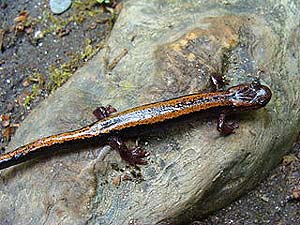 The species classified under this category need water for reproduction. A good example of species considered under this type of salamanders includes the red salamander, tiger salamander, and the gold-striped salamander.
The species classified under this category need water for reproduction. A good example of species considered under this type of salamanders includes the red salamander, tiger salamander, and the gold-striped salamander.
The red salamander inhabits the areas around or in slow-moving cold springs and streams. The tiger salamanders inhabit deep burrows, fields next to ponds, lakes, or slow-moving streams.
The gold-striped salamanders inhabit regions with mild temperatures and high relative moisture, especially along the shores of mountain rivers, near marshes, and deciduous woods.
![]()
C) Terrestrial Salamanders
| Animalia | Caudata | Plethodontidae | Aneides | Aneides ferreus |
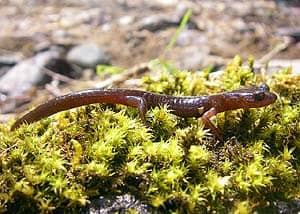 This type of salamanders is different from the semi-aquatic ones because they do not need an aquatic environment for reproduction.
This type of salamanders is different from the semi-aquatic ones because they do not need an aquatic environment for reproduction.
A notable example of this category of salamanders is the clouded salamander, which inhabits forest edges which are damp and mossy. They can also be found in clearings.
![]()
How Do Salamanders Hunt?
Hunting is a dynamic process for salamanders. They can detect their prey by sensing through the sound wave vibrations, which is facilitated by the presence of sensory nodes on their bodies.
- Visual senses also come in handy for a majority of salamanders. Most species are nocturnal and so their excellent night vision gives them an edge during hunting.
- Upon detecting their prey, which may include earthworms, ants, and other small organisms which they can eat, salamanders capture them with the use of the sideways snap of their jaws.
- Salamanders with the example of the Chinese giant salamander use the sit-and-wait strategy to stalk their prey (which often is a fish, small amphibian, or a small mammal). They then bite their prey before proceeding to consume it.
![]()
When Do Salamanders Eat?
Salamanders tend to be more active during the cool periods of the day, and a majority of them are nocturnal. During the day they can be found under rocks and in trees. They often come out at night to eat.
![]()
How Often Do Salamanders Eat?
Salamanders will eat depending on the season, type of food, and availability of food. For instance, during winter, they tend to eat less when compared to summer.
![]()
What Eats Salamanders?
![]()
Where Do Salamanders Fit In The Animal Food Chain?
Salamanders are essential to the animal food chain. Their role as predators of a myriad of arthropods is instrumental in maintaining the health of forests by regulating the population of these small organisms.
Salamanders also provide food to numerous organisms in the animal food chain, thus promoting their survival.
![]()
Cite This Page
Key References
- “About Salamanders”. Accessed June 24, 2019. Link.
- “Life History and Species Richness”. Accessed June 24, 2019. Link.
- “ADW: Necturus maculosus: INFORMATION”. Accessed June 24, 2019. Link.
- “Clouded Salamander, Aneides ferreus”. Accessed June 24, 2019. Link.
- “Tiger Salamander”. Accessed June 24, 2019. Link.
- “Facts About Salamanders”. Accessed June 24, 2019. Link.
- “Salamander Biology – Predators and Prey | AustinTexas.gov – The Official Website of the City of Austin”. Accessed June 24, 2019. Link.
- “Salamanders’ Important Role | California Academy of Sciences”. Accessed June 24, 2019. Link.
- “Peter Paplanus | Flickr”. Accessed June 24, 2019. Link.
- “File:Chioglossa lusitanica.005.JPG – Wikimedia Commons”. Accessed June 24, 2019. Link.
- “Oregon Department of Fish & Wildlife | Flickr”. Accessed June 24, 2019. Link.
- “Mudpuppy | National Geographic”. Accessed June 24, 2019. Link.
- “ADW: Pseudotriton ruber: INFORMATION”. Accessed June 24, 2019. Link.
- “Tiger Salamander | National Geographic”. Accessed June 24, 2019. Link.
- “Fauna”. Accessed June 24, 2019. Link.
- “Clouded Salamander – Aneides ferreus”. Accessed June 24, 2019. Link.


